

0
+
Google Reviews


0
+
4.5 (2550 Ratings)
The Windows | Azure Cloud | Azure DevOps & PowerShell Scripting Combo Program is an intensive, job-oriented training course crafted for IT professionals who want to
master enterprise-grade system administration, cloud computing, DevOps practices, and automation with scripting. This curriculum combines the practical administration of Windows Server, core and advanced concepts of Microsoft Azure, CI/CD automation using Azure DevOps, and PowerShell scripting to automate routine admin and DevOps tasks. The program is designed with real-time scenarios, project-based learning, and certification alignment for AZ-104, AZ-900, AZ-400, and Windows Server Admin.
Duration: 6 Months | 250+ Hours | Weekdays/Weekends
Mode of Training : Classroom/Online/Corporate Training
🧰 Technologies & Tools Covered
________________________________________
🖥️ Windows Server Administration (2016/2019/2022)
☁️ Azure Cloud Administration (AZ-104 & AZ-900 Aligned)
🚀 Azure DevOps (AZ-400 Aligned)
🧠 PowerShell Scripting for Admin & Automation




Curriculum Designed by Experts
• Strong fundamentals in Windows Server System Admin
• Clear understanding of Azure Cloud services
• Ability to build & automate CI/CD pipelines in Azure DevOps
• Efficient PowerShell scripting for automation
• Hands-on skills to handle real-time enterprise projects
• Preparedness for certifications like AZ-104, AZ-900, AZ-400
• Windows System Administrators
• Cloud Administrators / Support Engineers
• DevOps & Infrastructure Engineers
• Freshers with IT Background
• Professionals transitioning to Azure Cloud/DevOps
• Candidates with career gap looking to upskill
• ✅ Microsoft Certified: Azure Administrator Associate (AZ-104)
• ✅ Microsoft Certified: Azure Fundamentals (AZ-900)
• ✅ Microsoft Certified: DevOps Engineer Expert (AZ-400)
• ✅ Windows Server Administration (2016/2019/2022)
• 💼 Resume Building & Interview Prep
• 🛠️ Real-Time Lab Exercises
• 📈 10+ Projects Across Domains
• 🎥 Class Recordings & Doubt Sessions
• 📘 Job Scenario-Based Assignments
• 🏆 End-of-Course Certification from Institute
Windows Server 2022 Administration Training Syllabus designed for IT
Administrators, System Engineers, and Support Professionals. This course
includes real-world system management, Active Directory, Group Policies,
Windows Server roles, and PowerShell scripting for enterprise environments.
Target Audience:
• L1/L2/L3 Windows System Admins
• Network & Server Engineers
• IT Support Engineers
• Cloud & Infrastructure Admins
• Windows Server 2022 editions (Standard, Datacenter, Azure)
• System requirements & licensing
• Server Core vs Desktop Experience
• Installation (ISO/VMs/Hyper-V)
• Initial configuration via Server Manager & sconfig
Lab:
• Install Server 2022 (GUI and Core)
• Rename server, set static IP, update system
• Overview of Windows Roles & Features
• Role installation via Server Manager and PowerShell
• Server Manager tools & remote management
• Feature on Demand (FoD)
Lab:
• Install & remove roles (e.g., Web Server, DNS)
• Use PowerShell to manage roles
• Domain, Forest, Tree concepts
• Installing and promoting Domain Controllers
• Managing OUs, Users, Groups, Computers
• AD Replication & Trusts
• Read-Only Domain Controller (RODC)
Lab:
• Install AD DS and promote to DC
• Create users/groups with PowerShell
• GPO processing order
• User & Computer GPO settings
• GPO filtering, loopback, inheritance
• Security Policies, Folder Redirection
• Login scripts and software deployment via GPO
Lab:
• Create GPOs to block USB, set passwords, map drives
• Apply WMI filtering and GPO troubleshooting
• DNS zones (forward/reverse)
• A, PTR, CNAME, MX records
• DHCP scopes, reservations, exclusions
• DHCP failover
Lab:
• Configure DNS with custom zones
• Create a dynamic DHCP scope with reservation
• NTFS vs ReFS
• Shared folders, quotas, DFS
• Volume Shadow Copy
• File Server Resource Manager (FSRM)
• Storage Spaces & iSCSI
Lab:
• Configure SMB shares with permissions
• Implement FSRM for file screening
• Installing and configuring WSUS
• Targeting updates using GPO
• Approving and declining updates
• WSUS maintenance and logs
Lab:
• Setup WSUS and apply GPO to clients
• Installing and configuring Hyper-V role
• Creating and managing VMs, checkpoints
• Virtual switch types (external, internal, private)
• Nested virtualization and VM export/import
Lab:
• Install Hyper-V and create test VMs
• Remote Desktop Services (RDS) basics
• Remote Desktop Gateway
• Enabling RDP, firewall rules
• Secure remote admin via PowerShell
Lab:
• Enable RDP, configure remote admin using roles
• Defender AV, ATP, SmartScreen
• Local security policies
• Account lockout policies
• Enabling auditing
Lab:
• Enable Windows Firewall with rules
• Configure security baselines
• Windows Server Backup
• System State Backup and Restore
• Bare Metal Recovery
• Volume Shadow Copy (VSS)
• Scheduled backup jobs
Lab:
• Configure daily backups and restore test files
• PowerShell vs Command Prompt
• Cmdlets for AD, DNS, DHCP, Hyper-V
• Remote PowerShell (Enter-PSSession, Invoke-Command)
• Scripts and scheduling
Lab:
• Bulk create users, automate reports, schedule scripts
• Event Viewer and logs
• Resource Monitor, Task Manager, PerfMon
• Alerts and counters
• Windows Admin Center
Lab:
• Monitor server performance and generate health reports
• Troubleshoot logon, DNS, GPO issues
• Use dcdiag, netdom, repadmin, nltest
• Scheduled tasks, disk cleanup, patching
• Troubleshoot boot issues and recover from failure
Lab:
• Simulate login/GPO failure and fix it
Project 1: Setup & Manage Corporate AD Infrastructure
• Design OU structure, user accounts, and GPOs
• Implement DNS, DHCP, File Server with ACLs
Project 2: Backup & Disaster Recovery Plan
• Backup Domain Controller, perform restore
• Automate backup with PowerShell
• 60 hours of training
• 20+ practical labs
• 2 capstone projects
• Real-time ticketing scenarios
• Interview Q&A + Resume Support
Focus: Day-to-day support, user management, and monitoring.
1. Create/modify/disable Active Directory users, groups, and OUs.
2. Reset passwords, unlock user accounts.
3. Join/remove machines to/from the domain.
4. Assign folder/file permissions using NTFS.
5. Create network shares & assign share permissions.
6. Monitor event logs using Event Viewer.
7. Manage print servers and troubleshoot print queues.
8. Apply patches via WSUS or Windows Update manually.
9. Map network drives using GPO or scripts.
10. Monitor disk space and usage alerts.
11.Basic PowerShell commands for user/group management.
12. Troubleshoot RDP login failures.
13.Restart services and manage service dependencies.
14.Verify and log hardware/software inventory.
15.Provide first-level support on login, access, and printer issues.
Focus: Core configuration, GPOs, DNS/DHCP, performance tuning.
16.Install/Configure DNS, DHCP roles.
17.Configure DHCP scopes, reservations, exclusions.
18.Create/Manage Group Policy Objects (GPOs).
19.Apply security policies via GPO (e.g., password policy, USB block).
20.Implement Folder Redirection using GPO.
21. Troubleshoot AD replication and FSMO roles.
22.Backup & restore AD using Windows Server Backup or Veeam.
23. Manage storage: partitions, volumes, Storage Spaces.
24.Configure File Server Resource Manager (FSRM) for quotas & screening.
25.Schedule tasks using Task Scheduler.
26.Deploy and manage printers via GPO.
27. Troubleshoot DNS resolution and record propagation.
28.Implement DFS (Distributed File System).
29.Perform system performance analysis using Performance Monitor.
30. Monitor and optimize Windows Firewall settings.
31.Automate daily tasks using PowerShell scripts.
32.Implement Shadow Copies for shared folders.
33.Configure BitLocker for server drives.
34. Manage scheduled updates and patch compliance via WSUS.
Focus: Architecture, virtualization, disaster recovery, security, and automation.
35.Design and deploy Active Directory forest/domain.
36.Perform AD schema updates and domain migrations.
37. Manage FSMO role transfers and seize roles if necessary.
38.Configure Hyper-V hosts and virtual switches.
39.Implement RODCs in branch offices.
40.Design high availability with failover clustering.
41.Set up and manage IPAM (IP Address Management).
42.Integrate on-prem AD with Azure AD (Hybrid Identity).
43.Configure and manage Group Managed Service Accounts (gMSA).
44.Implement fine-grained password policies.
45.Use PowerShell DSC (Desired State Configuration).
46.Automate server builds via PowerShell or MDT.
47.Configure secure remote administration via WinRM/PowerShell remoting.
48.Create audit policies for login/logoff, file access.
49.Configure NPS (Network Policy Server) for RADIUS and 802.1x.
50.Disaster recovery: Bare-metal restore of Domain Controllers.
51. Monitor servers with Windows Admin Center or SCOM.
52.Apply CIS/NIST security hardening guidelines.
53. Manage certificates using Windows CA and auto-enrollment.
54.Perform kernel-level troubleshooting with WinDbg if required.
55.Develop and maintain server documentation and SOPs.
• Configure GPO to disable USB for all users except IT.
• Troubleshoot slow logon caused by broken GPO.
• Migrate DHCP from Server 2016 to 2022.
• Automate new user creation with PowerShell based on HR CSV.
• Design AD OU structure for a multi-site enterprise.
• Configure Hyper-V failover for critical web apps.
• Build a secure RDP gateway for remote staff.
• Perform monthly patching with WSUS + rollback testing.
Azure Administration Training Syllabus that combines both AZ-900 (Fundamentals) and AZ-104 (Azure Administrator Associate) content. It’s designed for job-oriented learning, covering real-time cloud administration tasks, projects, and scenariobased labs from basic to advanced.
Duration: 60–80 Hours
Target Audience: Cloud Admins, DevOps Engineers, System Admins, Network Engineers, Freshers Hands-On Labs | Job Tasks | Capstone Projects | Interview Prep
Goal: Understand basic cloud concepts and Azure global infrastructure.
• What is Cloud Computing? (IaaS, PaaS, SaaS)
• Benefits of Azure over on-prem
• Azure Regions, Availability Zones, Subscriptions, Tenants
• Azure Resource Manager (ARM) and Resource Groups
• Azure CLI, Azure Portal, PowerShell basics
• Understanding Azure SLAs and Pricing Models
Lab: Create Azure Free Account, Explore Portal, Launch a Linux & Windows VM
Job Scenario: Design basic 3-tier infrastructure across two regions
AZ-104 Section – Core Administrative Skill
• Azure AD overview vs on-prem AD
• Users, Groups, Devices, Roles
• RBAC (Role-Based Access Control)
• Azure AD Roles vs Resource Roles
• Conditional Access Policies
• MFA Setup & Password Reset
Lab: Create users, groups, assign roles, implement MFA
Scenario: Restrict VM access to only DevOps team with custom role
Goal: Manage workloads using VMs and VMSS
• Azure VM creation, images, sizing
• Availability Sets vs Availability Zones
• Managed Disks, Snapshots, Custom Images
• Azure VMSS (Scale Sets)
• Azure Bastion, Just-In-Time Access
• VM Auto-shutdown, Auto-start
• Backup and restore VMs
Lab: Deploy Windows and Linux VMs in different regions
Scenario: Build Auto-healing VMSS for a production web app
Focus: Secure storage for VMs, apps, and logs
• Storage Accounts: Blob, Queue, Table, File
• Access tiers: Hot, Cool, Archive
• Azure File Shares (NFS/SMB)
• Shared Access Signatures (SAS)
• Storage replication (LRS, ZRS, GRS)
• Lifecycle Management Policies
• Azure Storage Explorer, AzCopy
Lab: Host static website on Azure Blob
Scenario: Implement tiered archive policy for log retention
Focus: Design & secure Azure network topologies
• Virtual Networks (VNet), Subnets
• IP Addressing, NSG (Network Security Groups)
• Azure DNS, Private DNS
• Azure Load Balancer (Public/Internal)
• Application Gateway with WAF
• Azure Firewall & Route Tables (UDRs)
• VNet Peering, Service Endpoints, Private Link
Lab: Build a secure 3-tier network with public web + private DB
Scenario: Enforce NSGs to block RDP/SSH from Internet except jumpbox
Focus: Automate and observe cloud infra
• Azure Monitor, Alerts, Metrics
• Log Analytics Workspace
• Diagnostic Settings
• Azure Activity Logs
• Azure Resource Graph
• Azure Automation Runbooks
Lab: Setup alert for CPU > 70%, create action group
Scenario: Send daily usage reports to admin via Automation
Goal: Protect and recover workloads
• Azure Recovery Services Vault
• VM backup policies and restore points
• File-level restore
• Backup Monitoring
• Azure Site Recovery (ASR)
Lab: Backup a VM and simulate restore from vault
Scenario: Schedule backup for 10 servers, 30-day retention
Goal: Enforce policy & cost control
• Azure Policies (deny public IP, enforce tagging)
• Azure Blueprints
• Locks
• Budgets, Cost Analysis, Pricing Calculator
Lab: Enforce “Tag Required” policy on all resources
Scenario: Block users from creating costly VM SKUs (CanNotDelete/ReadOnly)
• Management Groups & Subscriptions
Goal: Understand basic cloud concepts and Azure global infrastructure.
• What is Cloud Computing? (IaaS, PaaS, SaaS)
• Benefits of Azure over on-prem
• Azure Regions, Availability Zones, Subscriptions, Tenants
• Azure Resource Manager (ARM) and Resource Groups
• Azure CLI, Azure Portal, PowerShell basics
• Understanding Azure SLAs and Pricing Models
Lab: Create Azure Free Account, Explore Portal, Launch a Linux & Windows VM
Job Scenario: Design basic 3-tier infrastructure across two regions
Introductory DevOps integrations for Admins
• Azure Container Instances
• Azure Kubernetes Service (overview)
• Azure CLI in pipelines
• VM image management with Shared Image Gallery
Lab: Run container on ACI
Scenario: Run a microservice-based container app as test lab
Project 1: Deploy a Secure Azure IaaS App
• Multi-tier App with VMSS, App Gateway, NSG
• Bastion, backup, diagnostics
Project 2: Azure Governance & Monitoring Suite
• Policies, locks, budget alerts, monitoring dashboard
Project 3: Hybrid Identity Implementation
• Azure AD Connect, SSO, conditional access for on-prem synced users
• 80+ hours instructor-led & lab-driven
• 50+ real-time tasks
• 3+ Projects with architecture design
• Resume, GitHub Repo, Interview Q&A
• AZ-900 & AZ-104 Certification Guidance
L1 Tasks (Entry-Level / Junior Azure Admin / Support Engineer)
Primary focus: Operations, monitoring, basic provisioning, and user support
1. Monitor Azure resources via Azure Monitor, Alerts, and Dashboard
2. Restart/stop/start Azure VMs or services when instructed
3. Assign RBAC roles to users in resource groups
4. Respond to common Azure-related incidents (login failure, quota exceeded)
5. Perform VM resizing or disk expansion under guidance
6. Use Azure Portal to create simple resources (VM, storage)
7. Tag resources properly (CostCenter, Owner, Environment)
8. Map and analyze costs using Cost Management blade
9. Configure auto-shutdown/start schedules for VMs
10.Perform Azure Backup initiation or on-demand restores
11.Open Microsoft support cases for platform issues
12.Create shared file shares using Azure Files
13.Run basic Azure CLI / PowerShell commands
14.Assign users to Azure AD groups
15. Monitor Activity Logs and generate reports
16.Validate Azure resource health status
17. Follow SOPs for patching VMs using Update Management
18. Manage storage access (SAS tokens, permissions)
19.Perform VM disk snapshots
20. Maintain documentation and daily handover reports
L2 Tasks (Mid-Level / Azure Administrator)
Primary focus: Provisioning, configuration, performance, identity, and policy management
1. Design & deploy VNets, NSGs, UDRs for a secure network layout
2. Configure Azure Load Balancer and App Gateway (with WAF)
3. Setup and troubleshoot VNet peering, Service Endpoints, Private Link
4. Create and manage ARM templates for automated deployments
5. Configure and manage Azure Backup vault and policies
6. Manage storage tiers (Hot/Cool/Archive) and lifecycle rules
7. Configure Azure AD Connect and monitor synchronization health
8. Create Conditional Access Policies for Azure AD users
9. Setup Diagnostics Logs and push to Log Analytics
10.Implement Azure Policy for resource tagging or SKU enforcement
11.Automate tasks with PowerShell or Azure CLI scripts
12.Design alerts using Action Groups (email, webhook, logic apps)
13. Manage Azure Key Vault, secrets, and access policies
14.Perform basic Azure Site Recovery setup and failover testing
15.Configure and manage Azure Automation Runbooks
16.Deploy scalable infrastructure with VMSS
17.Setup Bastion for secure RDP/SSH access
18.Optimize cost by analyzing resource usage (e.g., underutilized VMs)
19.Build and deploy containers using ACI or intro AKS
20.Work on tagging compliance, role permissions, and policy violation
remediations
L3 Tasks (Senior Azure Admin / Architect / Cloud Engineer)
Primary focus: Architecture, security, optimization,automation, and hybrid scenarios
1. Design secure hybrid identity with AD DS + Azure AD + Conditional Access
2. Implement multi-region high availability with zone-redundant architecture
3. Troubleshoot advanced networking issues (ExpressRoute, IP flow verify)
4. Implement custom RBAC roles using JSON definitions
5. Integrate Azure with on-prem using VPN Gateway or ExpressRoute
6. Design and deploy hub-and-spoke network architecture
7. Configure Azure Firewall, Application Gateway with advanced routing rules
8. Build Infrastructure-as-Code (IaC) using ARM/Bicep/Terraform
9. Create Azure Blueprints for regulatory-compliant environments
10.Implement Identity Protection and risk-based policies
11.Perform advanced PowerShell scripting for lifecycle automation
12.Design disaster recovery using Azure Site Recovery for hybrid apps
13.Implement Private DNS zones for internal name resolution
14.Configure Azure Lighthouse for multi-tenant management
15.Enable managed identities for applications and services
16.Perform cost optimization and Reserved Instance (RI) planning
17. Migrate workloads from AWS/VMware to Azure using Azure Migrate
18.Audit and remediate security vulnerabilities using Defender for Cloud
19.Architect Azure landing zones with governance and compliance
20.Work closely with development and DevOps teams for pipeline integration
(DevSecOps)
Course completion certificate and Global Certifications are part of our all Master Program
Course completion certificate and Global Certifications are part of our all Master Program
Course completion certificate and Global Certifications are part of our all Master Program
REVIT ARCHITECTURE / REVIT MEP Course Training empowers you with cutting-edge skills in BIM modeling, 3D design, and efficient project coordination. Master the art of creating detailed architectural plans, MEP systems, and collaborative workflows. Enroll today to enhance your expertise, boost your productivity, and advance your career in the ever-growing design and construction industry!
REVIT ARCHITECTURE / REVIT MEP Course Training paves the way for careers in architecture, MEP design, and BIM coordination. Secure roles like BIM expert, draftsman, or project manager in leading firms. Gain expertise in design, analysis, and project execution. Enroll now to thrive in the booming construction industry and unlock endless career possibilities!
REVIT ARCHITECTURE / REVIT MEP Course Training integrates cloud adoption to revolutionize design workflows. With cloud-based BIM, experience seamless collaboration, secure data sharing, and real-time updates. Learn to manage projects remotely, improve productivity, and streamline operations. Enroll now to gain expertise in cloud technology and excel in the dynamic construction and design industry!
Unlock the potential of scalability and flexibility with REVIT ARCHITECTURE / REVIT MEP course training. Learn to design with precision, streamline workflows, and handle complex projects efficiently. Master Revit’s powerful BIM tools, enhance career prospects, and stay ahead in the dynamic AEC industry!
Excel in cost management with REVIT ARCHITECTURE / REVIT MEP course training. Master budgeting, reduce resource waste, and streamline processes using Revit’s advanced BIM tools. Gain hands-on expertise to manage project costs effectively, boost efficiency, and build a competitive edge in your AEC career!
Ensure security and compliance with REVIT ARCHITECTURE / REVIT MEP course training. Learn to manage sensitive project data, adhere to industry standards, and implement best practices in BIM workflows. Gain essential skills to deliver reliable, compliant designs in today’s regulated AEC environment!
Radical Technologies is the leading IT certification institute in Pune, offering a wide range of globally recognized certifications across various domains. With expert trainers and comprehensive course materials, it ensures that students gain in-depth knowledge and hands-on experience to excel in their careers. The institute’s certification programs are tailored to meet industry standards, helping professionals enhance their skillsets and boost their career prospects. From cloud technologies to data science, Radical Technologies covers it all, empowering individuals to stay ahead in the ever-evolving tech landscape. Achieve your professional goals with certifications that matter.
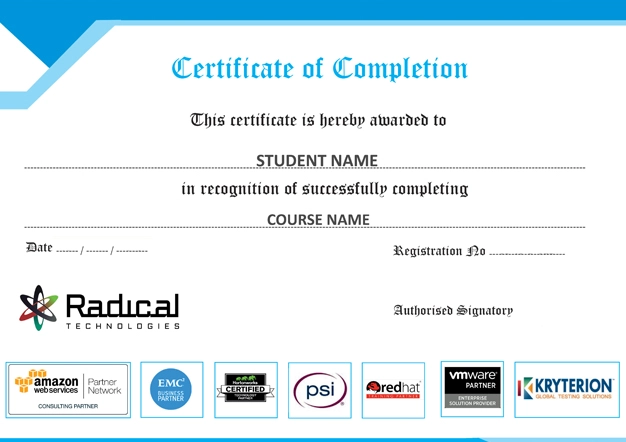





At Radical Technologies, we are committed to your success beyond the classroom. Our 100% Job Assistance program ensures that you are not only equipped with industry-relevant skills but also guided through the job placement process. With personalized resume building, interview preparation, and access to our extensive network of hiring partners, we help you take the next step confidently into your IT career. Join us and let your journey to a successful future begin with the right support.
At Radical Technologies, we ensure you’re ready to shine in any interview. Our comprehensive Interview Preparation program includes mock interviews, expert feedback, and tailored coaching sessions to build your confidence. Learn how to effectively communicate your skills, handle technical questions, and make a lasting impression on potential employers. With our guidance, you’ll walk into your interviews prepared and poised for success.
At Radical Technologies, we believe that a strong professional profile is key to standing out in the competitive IT industry. Our Profile Building services are designed to highlight your unique skills and experiences, crafting a resume and LinkedIn profile that resonate with employers. From tailored advice on showcasing your strengths to tips on optimizing your online presence, we provide the tools you need to make a lasting impression. Let us help you build a profile that opens doors to your dream career.


Infrastructure Provisioning
Implementing automated infrastructure provisioning and configuration management using Ansible. This may include setting up servers, networking devices, and other infrastructure components using playbooks and roles.


Applications Deployment
Automating the deployment and orchestration of applications across development, testing, and production environments. This could involve deploying web servers, databases. middleware, and other application components using Ansible


Continuous Integration
Integrating Ansible into CI/CD pipelines to automate software. build, test, and deployment processes. This may include automating the creation of build artifacts, running tests, and deploying applications to various environments.


Enrolling in the Revit MEP Certification in Bengaluru at Radical Technologies was a game-changer for my career. The instructors are experienced and approachable.
I took the Revit MEP Online Classes in Bengaluru, and the learning experience was seamless. The live sessions and recorded content made it easy to revisit concepts.
Radical Technologies is undoubtedly the best Revit MEP Institute in Bengaluru. Their training methodology is unmatched, and they provide excellent placement support.
The Revit MEP Online Course in Bengaluru offered by Radical Technologies allowed me to learn at my own pace without compromising quality.
If you're looking for Revit MEP Classes in Bengaluru, Radical Technologies is the right choice. Their detailed curriculum and project-based training are very effective.
The Revit MEP Corporate Training in Bengaluru conducted by Radical Technologies helped our team upskill quickly and efficiently. We highly recommend them.
I joined the Revit MEP Online Training in Bengaluru, and it was worth every penny. The trainers clarified all my doubts and provided excellent resources.
Radical Technologies offers the best Revit MEP Training in Bengaluru. Their real-time project work gave me the confidence to handle complex designs.
The Revit MEP Certification in Bengaluru from Radical Technologies added tremendous value to my resume and helped me secure a better job.
The instructors at Radical Technologies make learning easy. The Revit MEP Course in Bengaluru was comprehensive and well-paced.
I was impressed by the quality of the Revit MEP Online Certification in Bengaluru. The content was industry-relevant and up-to-date.
Radical Technologies’ Revit MEP Online Course in Bengaluru is perfect for working professionals. The flexible schedule allowed me to balance work and study.
The Revit MEP Classes in Bengaluru at Radical Technologies are highly interactive. The trainers are supportive and knowledgeable.
I had a great learning experience with the Revit MEP Online Classes in Bengaluru. The trainers ensured we understood the concepts thoroughly.
Radical Technologies is the best Revit MEP Institute in Bengaluru for anyone looking to start a career in building design and modeling.
The Revit MEP Corporate Training in Bengaluru delivered by Radical Technologies exceeded our expectations. The team became much more efficient in using BIM tools.
I joined the Revit MEP Online Training in Bengaluru to upgrade my skills, and it was an excellent decision. The trainers were very patient and knowledgeable.
Thanks to the Revit MEP Course in Bengaluru at Radical Technologies, I was able to complete a live project confidently during my training period.
The Revit MEP Certification in Bengaluru from Radical Technologies opened new career opportunities for me. The placement support was very helpful.
I opted for the Revit MEP Online Course in Bengaluru, and I loved the flexibility it offered. The content delivery was smooth and detailed.
Radical Technologies provides top-notch Revit MEP Training in Bengaluru. The practical sessions gave me the confidence to handle industry challenges.
The Revit MEP Online Certification in Bengaluru I completed at Radical Technologies gave me a competitive edge in my job search.
Radical Technologies offers the best Revit MEP Classes in Bengaluru with an updated syllabus and expert trainers. Highly recommended!
I took the Revit MEP Online Classes in Bengaluru, and the experience was amazing. The trainers are industry professionals who share real-world insights.
















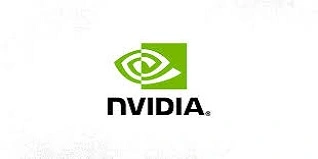

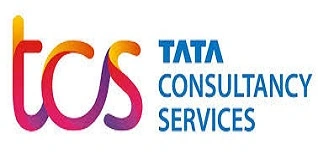

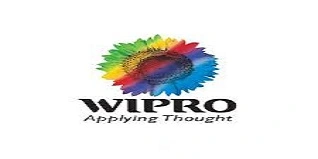





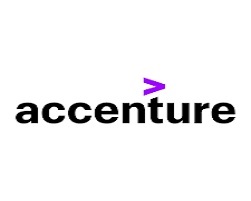

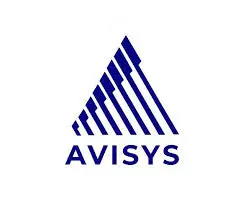

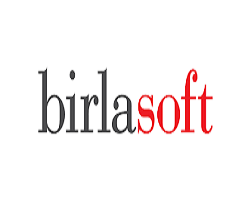

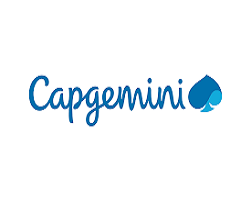

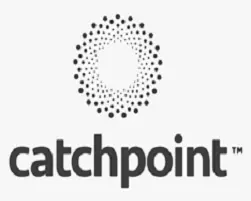





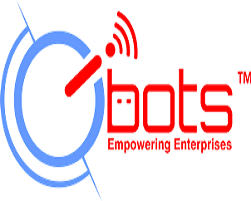











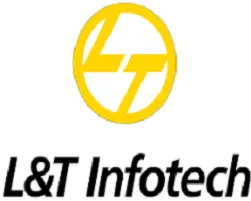

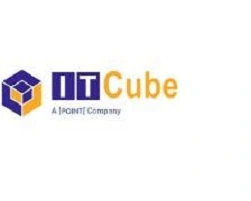



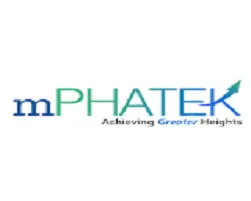

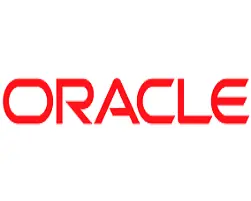







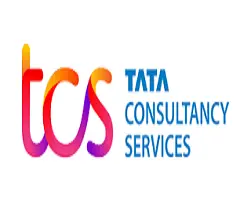





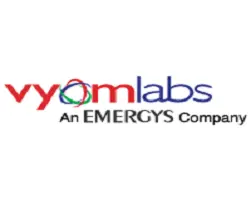

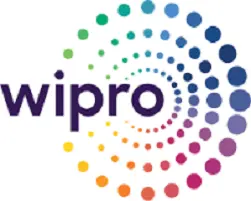

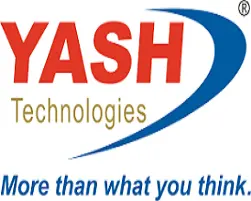

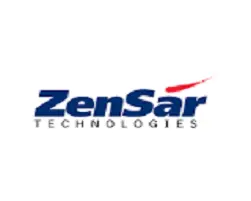

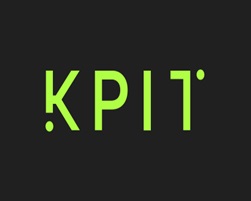



Revit MEP (Mechanical, Electrical, and Plumbing) is a Building Information Modeling (BIM) software developed by Autodesk. It is used to design, model, and coordinate mechanical, electrical, and plumbing systems in a building. Revit MEP allows engineers to create detailed 3D models, perform system analysis, and generate accurate documentation for construction projects.
Revit MEP provides a unified platform where mechanical, electrical, and plumbing teams can work on the same model. It integrates with cloud-based tools like Autodesk BIM 360, enabling real-time collaboration, design coordination, and conflict resolution among all project stakeholders.
Key features of Revit MEP include parametric components, clash detection, automated documentation, energy analysis tools, and integrated workflows. These features streamline the design process, enhance accuracy, and reduce errors.
Yes, Revit MEP includes energy analysis tools that allow designers to evaluate energy efficiency and optimize building systems. It supports green building certifications like LEED by enabling simulations for heating, cooling, lighting, and water usage.
Revit MEP is widely used in industries such as construction, architecture, HVAC engineering, electrical design, plumbing, and fire protection. It is also valuable for facility management and sustainability-focused projects.
Revit MEP uses built-in clash detection tools to identify conflicts between different systems (e.g., ducts, pipes, and electrical conduits) within the 3D model. This helps resolve issues during the design phase, reducing costly rework during construction.
Revit Architecture is focused on architectural design, including walls, roofs, and floor plans. Revit MEP, on the other hand, specializes in mechanical, electrical, and plumbing system design, analysis, and coordination. Both tools can work together to create a complete building model.
Yes, Revit MEP integrates seamlessly with other Autodesk products such as AutoCAD, Navisworks, and BIM 360. This integration allows for better workflow management, model collaboration, and project visualization.
Yes, Revit MEP is suitable for projects of all sizes. Its scalability allows it to be used for designing small residential buildings as well as large commercial and industrial complexes
Families in Revit MEP are pre-defined or custom parametric components used to represent system elements such as ducts, pipes, electrical fixtures, and equipment. These families can be modified to meet specific project requirements and reused across projects.
Revit MEP generates schedules, material takeoffs, and construction drawings directly from the 3D model. This automation ensures documentation is accurate, consistent, and updated in real-time as the design evolves.
Yes, Revit MEP is an excellent tool for retrofitting projects. Engineers can use the software to create models of existing systems, analyze their performance, and design upgrades or replacements to improve efficiency.
Revit MEP requires a powerful computer with a multi-core processor, a dedicated graphics card, and at least 16GB of RAM. For optimal performance, Autodesk recommends running the software on Windows 10 with a 64-bit operating system.
Yes, Radical Technologies offers flexible scheduling options for the Redhat Linux Course in Bangalore, including weekday and weekend classes to accommodate different schedules.
Revit MEP generates accurate material takeoffs and schedules, which can be used to estimate project costs. By linking the BIM model to cost estimation software, users can track budgets and make adjustments during the design phase to stay within financial constrain
Ambegaon Budruk | Aundh | Baner | Bavdhan Khurd | Bavdhan Budruk | Balewadi | Shivajinagar | Bibvewadi | Bhugaon | Bhukum | Dhankawadi | Dhanori | Dhayari | Erandwane | Fursungi | Ghorpadi | Hadapsar | Hingne Khurd | Karve Nagar | Kalas | Katraj | Khadki | Kharadi | Kondhwa | Koregaon Park | Kothrud | Lohagaon | Manjri | Markal | Mohammed Wadi | Mundhwa | Nanded | Parvati (Parvati Hill) | Panmala | Pashan | Pirangut | Shivane | Sus | Undri | Vishrantwadi | Vitthalwadi | Vadgaon Khurd | Vadgaon Budruk | Vadgaon Sheri | Wagholi | Wanwadi | Warje | Yerwada | Akurdi | Bhosari | Chakan | Charholi Budruk | Chikhli | Chimbali | Chinchwad | Dapodi | Dehu Road | Dighi | Dudulgaon | Hinjawadi | Kalewadi | Kasarwadi | Maan | Moshi | Phugewadi | Pimple Gurav | Pimple Nilakh | Pimple Saudagar | Pimpri | Ravet | Rahatani | Sangvi | Talawade | Tathawade | Thergaon | Wakad
I had an amazing experience with this service. The team was incredibly supportive and attentive to my needs. The quality of the work exceeded my expectations. I would highly recommend this to anyone looking for reliable and professional service."
I had an amazing experience with this service. The team was incredibly supportive and attentive to my needs. The quality of the work exceeded my expectations. I would highly recommend this to anyone looking for reliable and professional service."
I had an amazing experience with this service. The team was incredibly supportive and attentive to my needs. The quality of the work exceeded my expectations. I would highly recommend this to anyone looking for reliable and professional service."
I had an amazing experience with this service. The team was incredibly supportive and attentive to my needs. The quality of the work exceeded my expectations. I would highly recommend this to anyone looking for reliable and professional service."
I had an amazing experience with this service. The team was incredibly supportive and attentive to my needs. The quality of the work exceeded my expectations. I would highly recommend this to anyone looking for reliable and professional service."
Revit MEP (Mechanical, Electrical, and Plumbing) is a robust Building Information Modeling (BIM) software developed by Autodesk. It is specifically designed for engineers, designers, and contractors to streamline the design, documentation, and collaboration processes for building systems. Revit MEP is a cornerstone tool for those looking to create intelligent 3D models that integrate mechanical, electrical, and plumbing systems seamlessly within a building’s architectural framework.
Integrated Design Environment
Revit MEP offers an integrated workspace where mechanical, electrical, and plumbing systems can be designed collaboratively within a single model. This integration ensures that all disciplines are aligned and potential clashes are identified early in the design phase.
Parametric Components
The software enables the use of parametric components, or “families,” which are versatile elements that can be customized. These components allow users to efficiently adapt designs to meet specific project requirements, saving time and effort.
Clash Detection and Coordination
Revit MEP provides advanced clash detection capabilities. By identifying and resolving conflicts between different building systems during the design phase, the software reduces costly rework during construction.
Automated Documentation
With Revit MEP, generating accurate and detailed documentation is automated. Users can create schedules, drawings, and material takeoffs directly from the 3D model, ensuring consistency and accuracy.
Energy Analysis Tools
The software includes tools for performing energy analysis, helping designers create sustainable and energy-efficient systems. Revit MEP supports calculations for heating, cooling, and lighting, which aids in compliance with green building standards.
Collaborative Workflows
Revit MEP supports collaborative workflows through cloud-based integration with Autodesk BIM 360. Teams can share models, review designs, and track changes in real-time, enhancing project efficiency.
Enhanced Productivity
By automating repetitive tasks and reducing manual errors, Revit MEP allows professionals to focus on innovation and quality. The software improves project delivery timelines and lowers overall costs.
Improved Visualization
With its 3D modeling capabilities, Revit MEP provides a detailed view of building systems, making it easier to visualize the final output. This helps stakeholders better understand the design and make informed decisions.
Sustainability Integration
The ability to simulate energy performance and optimize system designs helps in creating eco-friendly buildings. Revit MEP aligns with global sustainability standards, including LEED and BREEAM.
Error Reduction
Through real-time collaboration and advanced coordination tools, Revit MEP minimizes errors and omissions, which can lead to expensive rework during construction.
Flexibility and Scalability
Whether you’re designing a small residential project or a large commercial complex, Revit MEP scales to meet the needs of diverse projects. Its adaptability makes it a preferred choice across industries.
Revit MEP, a specialized Building Information Modeling (BIM) software from Autodesk, is widely used in designing, analyzing, and documenting mechanical, electrical, and plumbing systems in buildings. Its versatile features and capabilities make it a preferred choice for professionals across multiple industries. Below are the key applications of Revit MEP:
1. HVAC System Design
Revit MEP enables detailed design, analysis, and visualization of Heating, Ventilation, and Air Conditioning (HVAC) systems. Engineers can create accurate ductwork layouts, airflow paths, and equipment placements. The software also helps perform load calculations, ensuring optimal system efficiency and compliance with energy standards.
2. Electrical Systems Design
Revit MEP is extensively used for designing electrical layouts, including wiring diagrams, circuit boards, and panel schedules. It allows engineers to plan and simulate power distribution systems, lighting designs, and emergency systems while ensuring compliance with regional electrical codes and safety standards.
3. Plumbing System Design
Plumbing engineers utilize Revit MEP to design and analyze water distribution and drainage systems. The software provides tools to model complex piping networks, calculate flow rates, and ensure proper placement of fixtures like sinks, faucets, and valves. This results in efficient water usage and system reliability.
4. Fire Protection System Design
Designing fire protection systems is a critical application of Revit MEP. Engineers can layout sprinkler systems, design pipe routing, and place fire suppression equipment accurately. Its clash detection feature ensures that fire protection systems do not interfere with other building components.
5. Energy Analysis and Sustainable Design
Revit MEP supports energy simulation and analysis, making it a valuable tool for designing energy-efficient systems. Engineers can evaluate heating and cooling loads, simulate lighting efficiency, and optimize building systems to align with green building certifications like LEED or BREEAM.
6. Clash Detection and Coordination
One of Revit MEP’s standout features is its ability to perform clash detection between mechanical, electrical, and plumbing systems. This ensures that all systems are seamlessly integrated into the building design, reducing errors and avoiding costly rework during construction.
7. Documentation and Scheduling
Revit MEP automates the creation of detailed documentation, such as schedules, material takeoffs, and 2D drawings, directly from the 3D model. This ensures accuracy and consistency while saving time during project planning and execution.
8. Collaboration and Workflow Optimization
Revit MEP supports collaborative workflows, enabling multiple stakeholders—such as architects, structural engineers, and contractors—to work on a unified model. This streamlines communication, ensures coordination, and enhances overall project efficiency.
9. Custom Component Design
The software allows engineers to create custom parametric components or “families,” tailored to specific project needs. This feature is particularly useful for projects that require unique system designs or specialized equipment.
10. Facility Management Integration
Revit MEP models can be integrated into facility management systems for post-construction operations. The detailed data embedded in the BIM model aids in maintenance planning, asset tracking, and lifecycle management of building systems.
Radical Technologies is the leading institute in Bengaluru for comprehensive Revit MEP Training, offering industry-focused courses to help students and professionals excel in the field of Building Information Modeling (BIM). With a proven track record of delivering top-notch training, we are committed to providing unparalleled learning experiences through expert-led sessions and hands-on projects.
Our Revit MEP Course in Bengaluru is designed to equip learners with practical skills and in-depth knowledge of mechanical, electrical, and plumbing systems. We take pride in being the preferred choice for individuals seeking to advance their careers through our Revit MEP Certification in Bengaluru and placement-focused training programs.
Experienced Trainers: Our instructors are industry experts with years of hands-on experience in Revit MEP and BIM projects.
Real-World Projects: We emphasize project-based learning, ensuring our students gain practical expertise.
Placement Support: Our dedicated placement team connects you with top companies, helping you kickstart or advance your career.
Flexible Learning Options: Whether you prefer classroom sessions or online learning, we have options tailored to your needs.
At Radical Technologies, we are more than just a Revit MEP Institute in Bengaluru; we are your partners in professional growth. Join us today and take the first step towards mastering Revit MEP and excelling in the competitive AEC (Architecture, Engineering, and Construction) industry.
For more information on our Revit MEP Training in Bengaluru, contact us today!


(Our Team will call you to discuss the Fees)
The Revit MEP Course in Bengaluru at Radical Technologies was well-structured and highly practical. The hands-on approach helped me gain real-world skills.